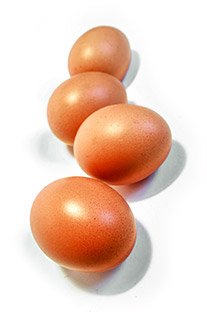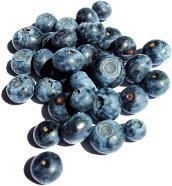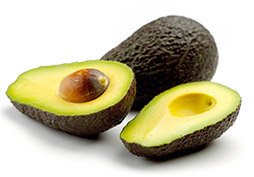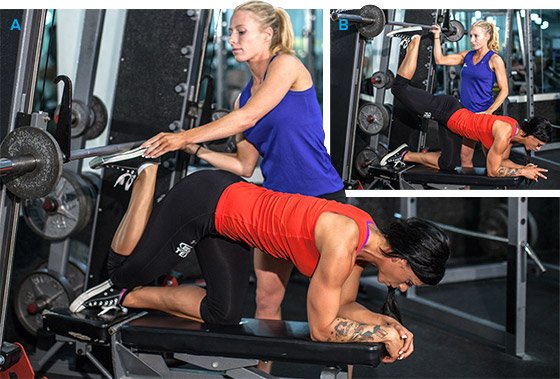
Fit For Life: 4 Tips For Building Muscle
It's not all about time spent on the treadmill, ladies. Earn and keep your gains by eating and lifting big.
These days, fitness is my lifestyle, but getting strong and healthy wasn't easy. In the months leading up to my first bikini competition in July 2012, I was ordered to eat no added fats or starchy carbs, and my diet consisted of chicken, fish, egg whites, and broccoli. My energy was nonexistent. After training two hours per day, including an hour of steady-state cardio, I'd come home and pass out on the couch. I thought this was what it took to get "stage ready."
I definitely got lean, but I also lost all my hard-earned muscle. The mental image I had of being a healthy and fit bikini competitor was completely off. I was just a skinny girl eating barely over 1,000 calories each day and passing it off as "health and fitness." My metabolism plummeted, and I ruined my thyroid. It's taken a year to try to fix the damage that "competition prep" did to my body.
Adopting a true fit lifestyle means taking care of your body from the inside out.
Gaining size and muscle the healthy, maintainable way took time, consistency, and persistence. Here are some insider tips I picked up along the way. Follow them and you'll build muscle, lose fat, and feel the best you have ever felt.
1. Caloric Needs
BMR CALCULATOR
I'm sure you've heard that a caloric deficit leads to weight loss. You might have even heard of some magic 1,200 calorie rule. Or perhaps you were taught to keep your carbs low and refrain from late-night eating. Sound like familiar advice? Don't follow everything you hear, or you'll be making the same mistakes I did.
The first thing I can't stress enough is to eat for your goals. Just as you can't expect to lose fat and stay metabolically healthy on a junk-food diet, you can't expect to gain muscle on salad and veggies alone. You need to eat big to gain big. Trust me, I know.
So, how much should you eat to fuel your gains? First, determine your basal metabolic rate (BMR), or how many calories you burn throughout the day at rest. You can calculate your BMR with the following equation, which we've built into a handy calculator to make things easy for you.
Once you know your BMR, estimate how many calories you burn daily at the gym and during other forms of exercise with an activity chart like this. Add that to your BMR. The total is how many calories you need to consume to maintain your current state.
If you want to lean out while still building muscle, I recommend eating just below that number. When my body is functioning at peak speed, my maintenance calories fall around 2,300. So, in order to keep muscle while dropping fat, I eat roughly 2,000 calories.
What about timing, you ask? Create a carb and fat intake schedule that works for you. I recommend eating your high-carb food like oats, brown rice, sweet potatoes, and berries before and directly after your workouts. Carbs will help you fuel your training and give your body a readily available energy source. A post-workout dose of carbs is also essential for hypertrophy and vital for building muscle tissue.

Save higher protein meals like that juicy cut of sirloin for times when you're less active. If you're a morning person like me and you enjoy hitting the gym before the sun rises, slate a healthy dose of carbs for your morning meal and save slower-to-digest fats for dinner. Care for a hearty BLT on wheat with avocado slices, anyone?
Also, make sure you get enough essential muscle-building protein to grow. I recommend 1.5-2 grams per pound of body weight. I try to space this out in 5-6 meals set roughly three hours apart throughout the day. It's an old-school intake method, but it works for me.
Here is a list of foods I recommend incorporating into your diet. It covers everything from macro-dense proteins and complex carbohydrates to essential fats designed to fuel your body at an optimum level.

Protein
- Lean white fish
- Chicken breast
- Flank steak
- Ground Sirloin
- Salmon
- Greek yogurt
- Ground turkey
- Egg whites
- Protein Powder
- Turkey bacon
- Lentils
- Buffalo
- Lean Ground Beef

Complex Carbs
- Oatmeal
- Sweet Potato
- Brown Rice
- Red Potatoes
- Black Beans
- Quinoa
- Butternut Squash
- Plain Popcorn
- Rice Cakes
- Cream of Wheat
- Strawberries
- Blueberries
- Fruits can be a great source of fuel post-workout

Fats
- Avocado
- Olive oil
- Coconut oil
- Almonds
- Walnuts
- Flank steak
- Salmon
- Egg yolk
2. Workout
Now, let's chat training. Be honest, do you head for the cardio machines when you first walk into the gym only to finish off your session with a few sets of the pink dumbbells? While there's no shame in doing a light workout, easy-going training around the clock isn't going to spell results.
Yes, ladies, this means hours spent on the treadmill are over. It's time to pump some serious iron! Lifting weights will get you lean, despite the stigma that lifting makes girls bulky. Strong structure, well-formed caps, and a nice quad sweep—those aren't going to come from lifting Tinker Bell dumbbells. So go heavy, ladies!

Aim for a weight that allows you to do 8-12 reps comfortably and with proper form. You should be able to keep the same tempo throughout each set. Slow and steady wins the race.
Remember, everything takes time and change doesn't happen overnight. Take it one step at a time. I follow a body part split workout: four days of heavy lifting and one day of plyometrics. On most days, I also throw in ab training and calves at the end of my workouts.
Here's a quick breakdown of my weekly split, with one of my favorite exercises for each body part.
- Day 1: Glutes
Favorite Exercise: Smith Machine Isolation Kickback - Day 2: Chest/Back
Favorite Chest Exercise: Cable Chest Flye
Favorite Back Exercise: Low Cable Row - Day 3: Rest
- Day 4: Hamstrings
Favorite Exercise: Dumbbell Deadlift - Day 5: Arms/Shoulders
Favorite Arms Exercise: Barbell Curl
Favorite Shoulders Exercise: Reverse Cable Flye - Day 6: Plyometrics
Favorite Exercises: Jump Squat, Jump Lunge, Pop Squat - Day 7: Rest

Smith Machine Isolation Kickback
Cardio
If you're going to do cardio, do it with purpose! Skip steady-state cardio and go for high-intensity interval training (HIIT). HIIT helps spike your metabolism and keep it elevated while torching fat deposits.
I do 25-35 minutes of HIIT cardio—three minutes of steady state followed by a one minute all-out sprint—and then repeat the cycle.
There are many versions of HIIT training, so find what works best for you.

Programming
When working to build muscle, I'm a huge fan of a 3:1 cycle. That means three weeks of heavy lifting—6-10 reps for 3-4 sets—followed by a week of high-rep, low-weight lifting at 15-20 reps for 3-4 sets.
Whether it's a heavy or light week, you should fail on your last set, so find the appropriate weight. If it feels light, slowly increase until you feel like you are losing control of the repetition.
On heavy-load days, I rest for 120 seconds between sets. Remember, lifting heavy makes proper form essential or you'll risk injury. Fully engage the muscles you're targeting, and fully extend and contract on each rep. I like to visualize the muscles I'm training. The mind-muscle connection is stronger than you might think.
On light days, I rest for 60 seconds between sets. You don't need to rest quite as long with lighter sets because it takes your body less time to fully recover.
3. Supplementation

Proper supplementation will help you get the most out of your workouts. BCAAs and glutamine are a lady's best friend when lifting for strength and muscle. I always take a scoop of BCAAs right after my workout and glutamine before bed.
These two supplements allow you to recover from your weight training much quicker with less post-exercise soreness. I also can't live without my daily multivitamins, pre-workout, digestive enzymes, and whey protein isolate.
4. Recovery
Training is essential to gaining. But, remember that all that time spent in the gym breaks tissue fibers down; rest rebuilds them.
Get sleep, drink plenty of fluids, and allow your body to recover from a hard session in the gym. This means eight hours of sleep per night and 1-2 gallons of water daily.
It's also important to find an activity that lowers your stress level, such as yoga or a movie, and make an effort to participate in it on a weekly basis.

